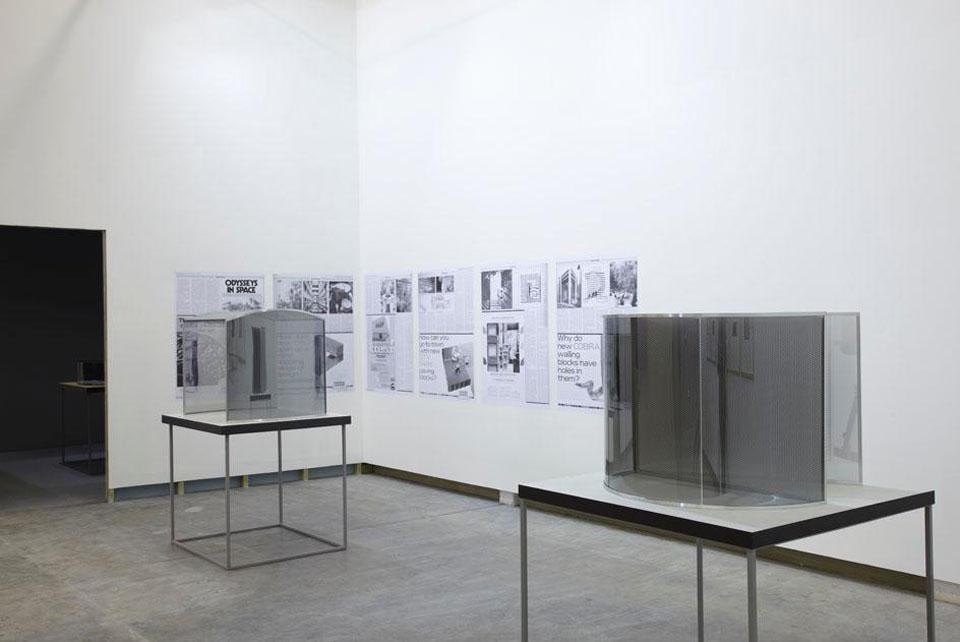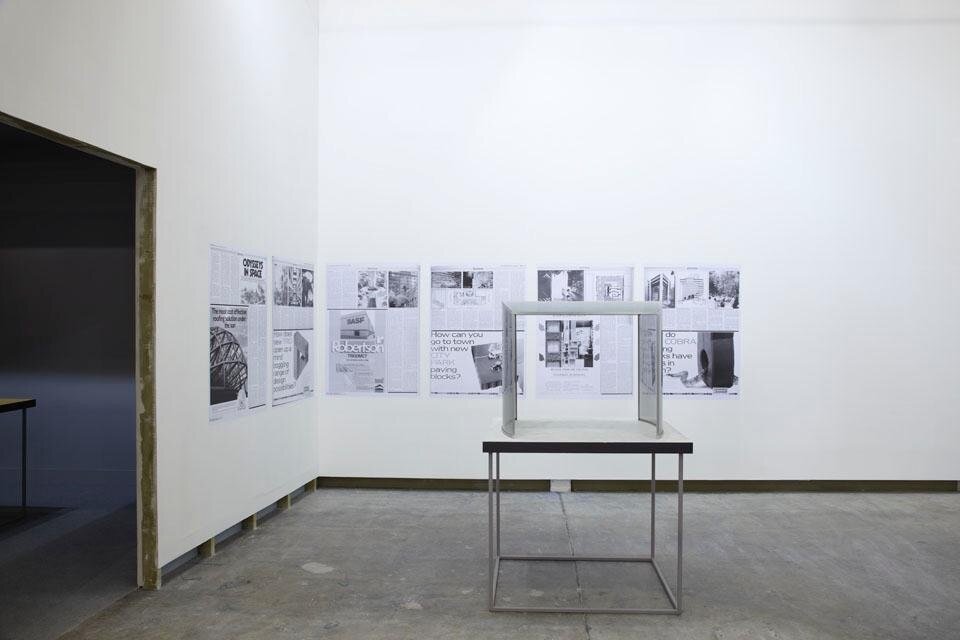
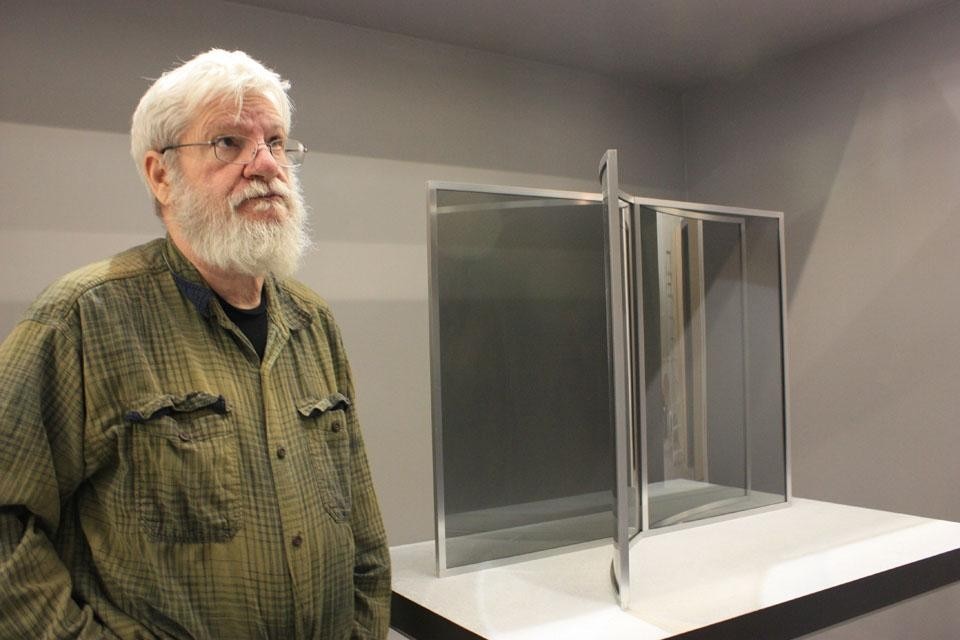
In this exhibition there is no actual beginning or end as such—the space is not didactic, directing thought and movement as if it knows something the viewer does not.
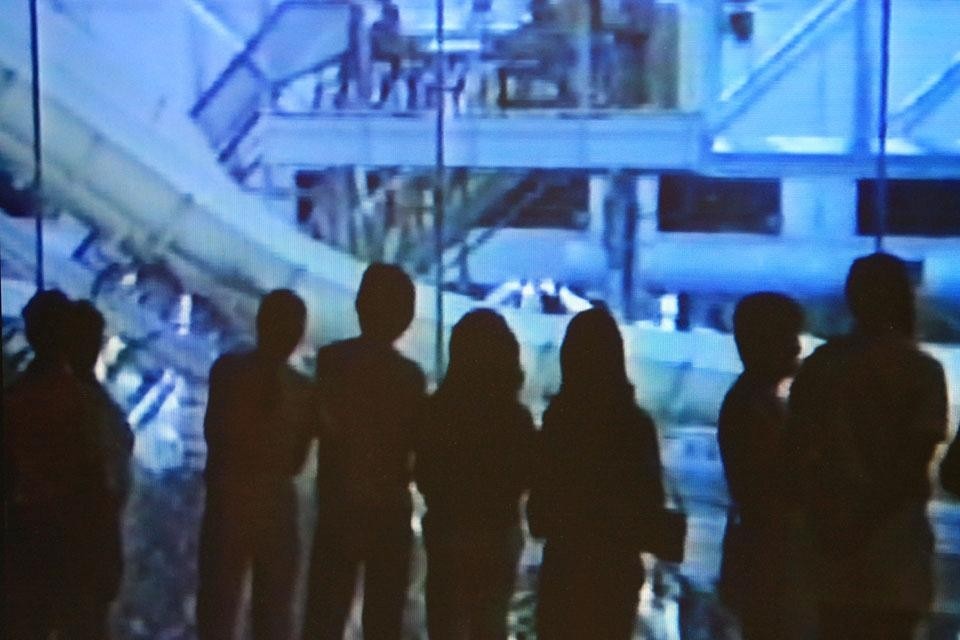
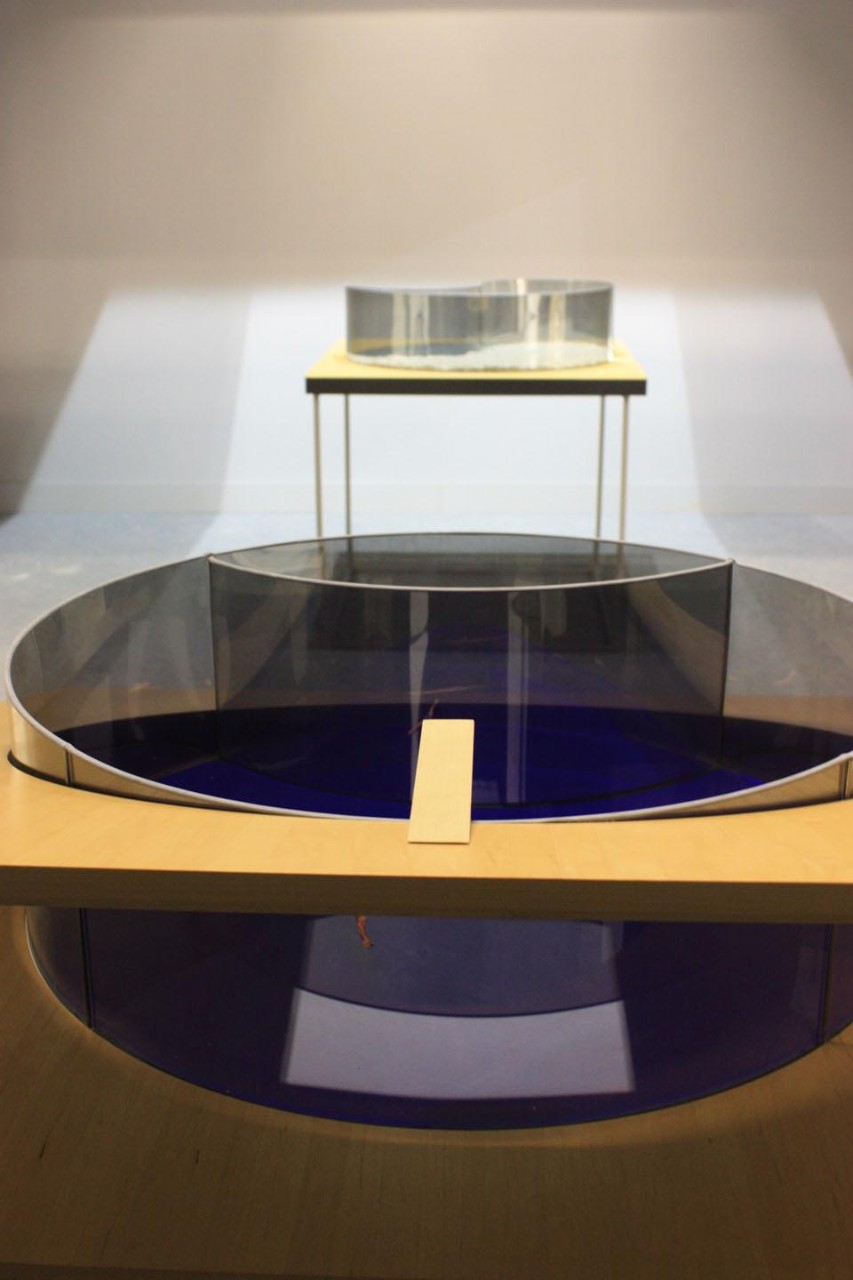
The now classic video 'Performer/Audience/Mirror' from 1977, is the only work here where Graham as artistic persona emerges—as a low-key but engaging interlocutor. Later featured in his selected writings Two-Way Mirror Power (1999), this piece defines Graham as a peripatetic philosopher of social space. The work opens up the way socially inscribed aesthetics of vision perpetuate concealed modes of cognitive domination at the same time enabling critical moments in human interaction. Graham is one of the great American post-minimalist artists, in part as the implications of his work are still yet fully to unfold.
Jonathan Vickery is Associate Professor at the Centre for Cultural Policy Studies, University of Warwick.
Dan Graham: Models and Videos
Eastside Projects, Birmingham, United Kingdom


